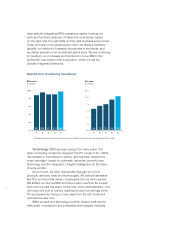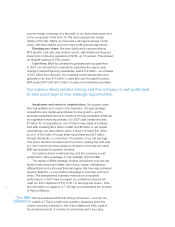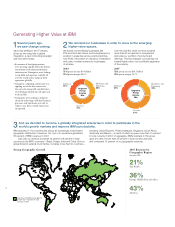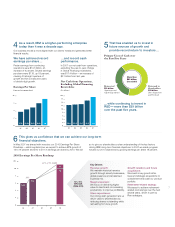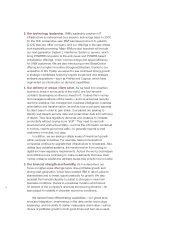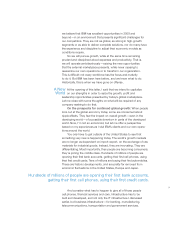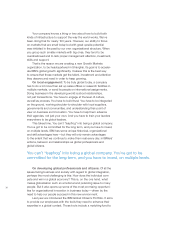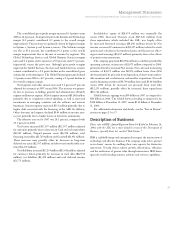IBM 2007 Annual Report Download - page 10
Download and view the complete annual report
Please find page 10 of the 2007 IBM annual report below. You can navigate through the pages in the report by either clicking on the pages listed below, or by using the keyword search tool below to find specific information within the annual report.8
3. Our technology leadership. IBM’s leadership position in IT
infrastructure is underpinned by a superior technology base. In 2007,
for the 15th consecutive year, IBM was issued more U.S. patents
(3,125) than any other company. And our offerings in the year ahead
look especially promising. Major IBM product launches will include
our next-generation System z mainframe; System p servers, which
bring POWER6 innovation to the entry level; and POWER-based
virtualization offerings, which improve energy and space efficiency
for UNIX customers. We are also introducing a new BladeCenter
offering and a highly innovative storage architecture, thanks to our
acquisition of XIV. Finally, we expect to see continued strong growth
in strategic middleware fueled by organic investment and strategic
software acquisitions
—
such as FileNet and Cognos, which have
augmented our information on demand capabilities.
4. Our delivery of unique client value. As we head into uncertain
economic times in some parts of the world, one fact remains
constant: Businesses continue to invest in IT. It saves them money
and manages business-critical needs
—
such as enterprise security,
real-time analytics, risk management, business intelligence, business
optimization and transformation, as well as how a company expands
its client base in order to gain share. Companies are seeking to
identify and classify security risks and protect their data from all forms
of attack. They face regulatory demands and pressure to increase
productivity without buying more “stuff.” They need to use both
structured and unstructured data
—
such as the information contained
in memos, reports and phone calls
—
to generate reports to their
customers in minutes, not days.
In addition, we are seeing multiple areas of investment growth
within particular industries. For example, telecommunications
companies continue to upgrade their infrastructure to broadband. Also,
utilities face outdated systems, the transformation from analog to
digital and new regulatory requirements. Across the world, businesses
and institutions are continuing to make investments that save them
money, preserve capital and address issues they simply may not defer.
5. Our financial strength and flexibility. As I’ve described, our
focus on higher-value offerings helps drive profitable growth and
strong cash generation, which have enabled IBM to return value to
shareholders and to invest opportunistically for growth. We also
possess the financial capacity to adjust to changes in near-term
business conditions, thanks to a business model in which about
50 percent of the company’s revenues are recurring streams
—
far
less subject to volatility in uncertain economic conditions.
We believe these differentiating capabilities
—
our global pres-
ence and integration; preeminence in the data center; technology
leadership; and the ability to deliver measurable client value
—
will be
drivers of profitable growth in both good times and bad. As a result,




